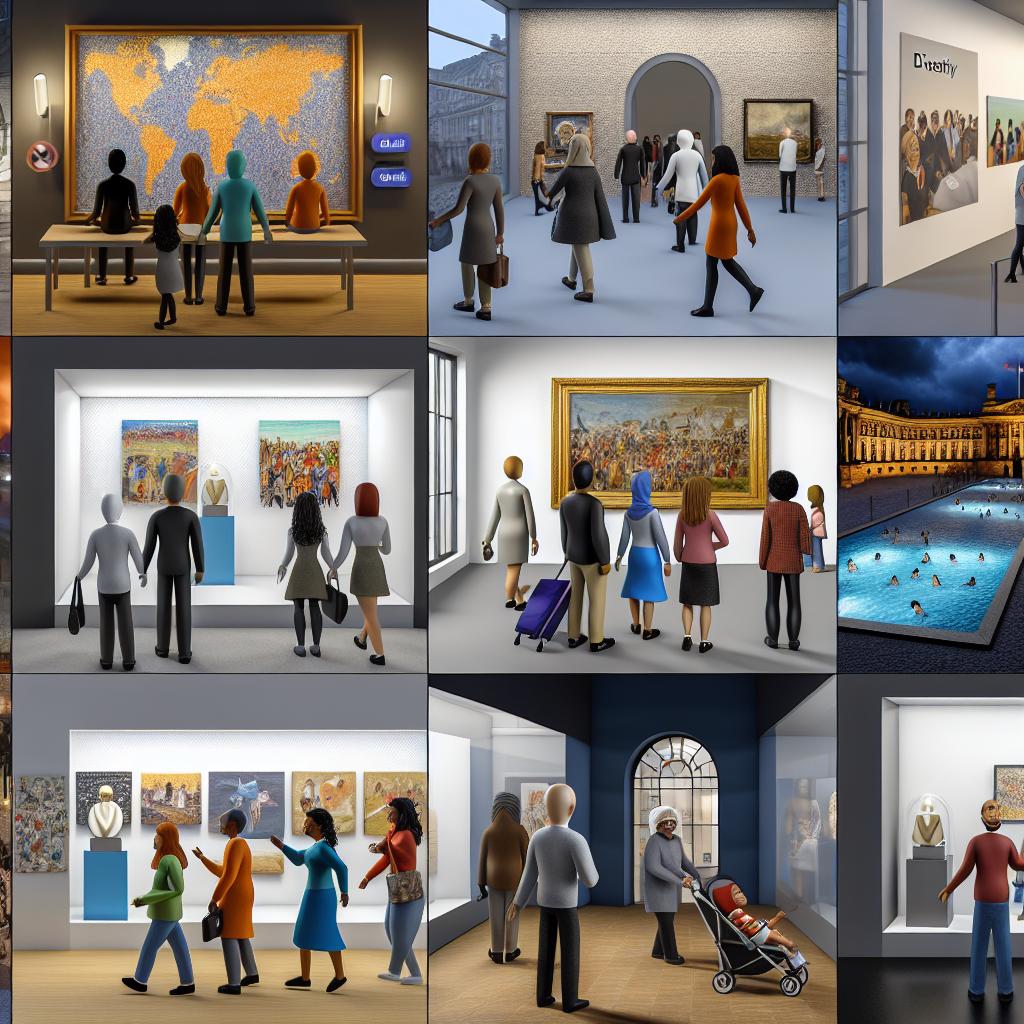The Importance of Diversity and Inclusion in European Museums
The discourse surrounding diversity and inclusion has assumed a significant role in the management and evolution of museums across Europe. As cultural beacons that preserve and showcase human heritage, these institutions are increasingly aware of their responsibility to represent the diverse societies they serve in a manner that is both accurate and respectful. This responsibility is not just ethical but also practical. By embracing diversity and promoting inclusivity, museums enhance their relevance and accessibility, attracting a broader audience and making significant contributions to societal understanding of varied cultures and histories.
Strategies for Enhancing Diversity and Inclusion
Museums in Europe apply a variety of strategies to foster diversity and inclusion within their walls. Each approach is tailored to address specific challenges and opportunities:
1. Diversifying Collections and Exhibits
One of the core strategies involves diversifying collections and exhibits. This is achieved by reassessing existing collections to identify gaps in representation and acquiring new works that highlight underrepresented artists and cultures. The process often includes collaborating with diverse communities to co-create exhibits that authentically reflect their histories and lived experiences. This strategy not only broadens the scope of cultural narratives presented but also celebrates the multiplicity of perspectives that exist in Europe.
2. Educational Programs
Educational programs form another crucial component of museum strategies for inclusion. Museums organize programs targeting various demographics and promoting inclusion through the exploration of diverse cultural narratives. These initiatives, which may include workshops, guided tours, and interactive activities, serve as platforms for cultural exchange and understanding. By engaging visitors in dialogue, these programs bridge cultural divides and foster a sense of shared human experience.
Community Engagement and Partnerships
A vital aspect of promoting diversity and inclusion in museums is through community engagement and the establishment of meaningful partnerships. Museums are increasingly reaching out to engage with diverse communities to collaborate and co-create narratives and exhibits. This engagement often manifests in the formation of community advisory boards, partnerships with local cultural organizations, and projects that invite community input and participation. Such partnerships enrich the museums’ narratives, ensuring they resonate with wider audiences and creating lasting connections with the communities they serve.
Training and Development for Staff
Recognizing that the fulfillment of diversity goals is contingent upon an informed and empathetic staff, many museums invest heavily in staff training and development programs. These initiatives aim to raise awareness and understanding of diversity issues among staff members, equipping them with the skills necessary to foster an inclusive and welcoming environment for all visitors. Training programs are tailored to empower museum staff in creating not only an inclusive visitor experience but also a workplace culture that values diversity and inclusivity.
Challenges and Opportunities
The pursuit of diversity and inclusion is not without its challenges in the context of European museums. A major challenge is the systemic issue of underrepresentation of diverse voices in leadership positions within museums. While progress is being made, the journey towards diverse leadership is often slow and requires focused effort. Diversifying leadership is critical for systemic change and for inspiring confidence and trust among diverse communities.
Museums also face the challenge of balancing their traditional roles as custodians of history with the imperative to reflect and address contemporary societal issues. This involves examining and acknowledging historical biases inherent in existing collections and narratives. By addressing these biases, museums can work towards presenting narratives that are more inclusive and reflective of today’s society, thereby enhancing their relevance to contemporary audiences.
Looking Ahead
The trajectory of diversity and inclusion efforts in European museums is one of growth and expansion. As these efforts continue to intensify, the overarching goal remains to create spaces that not only preserve and celebrate cultural heritage but also reflect the rich and varied tapestry of human experience. Museums are poised to evolve into dynamic cultural hubs that engage, educate, and inspire.
For those interested in exploring these efforts in detail, museum-specific resources offer a wealth of information on ongoing projects and future plans centered around diversity and inclusion. Museums such as the British Museum and the Louvre Museum provide insights into their diverse initiatives through their dedicated platforms. Engaging with these cultural institutions allows patrons and scholars to contribute to the discourse on diversity, shaping a more inclusive future for museums across Europe and beyond. By embracing diversity, museums do not merely adapt to societal shifts but actively participate in crafting a narrative that includes all voices, ultimately enriching the cultural landscape of Europe.

